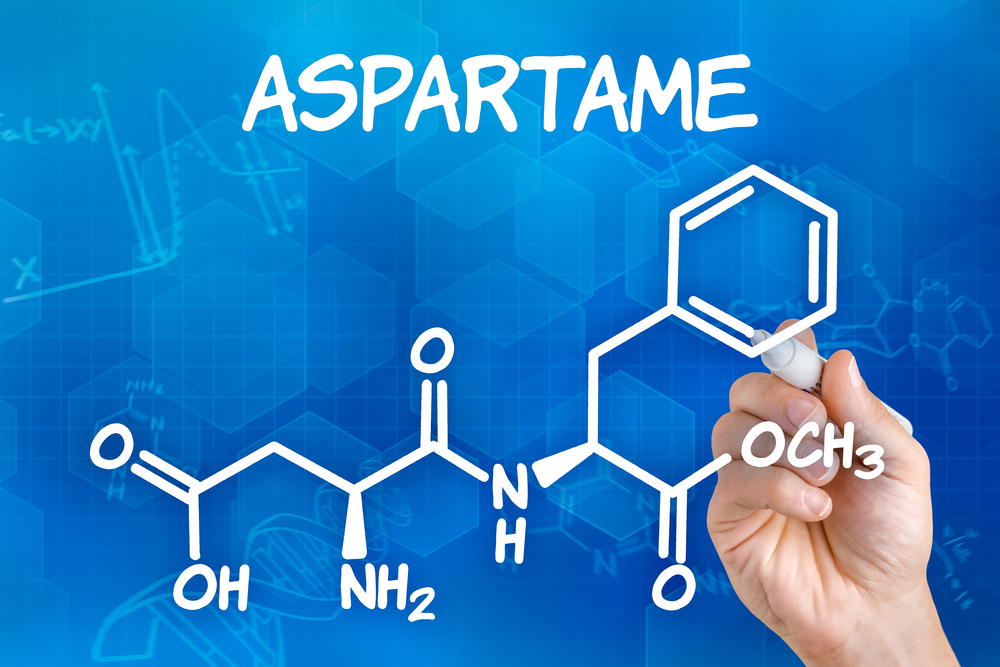
Aspartame from artificially-sweetened soft drinks can linger in saliva, triggering insulin secretion long after the sweetener is swallowed.
This, in turn, can cause blood glucose to drop resulting in appetite surges that nullify the alleged weight management benefits of the widely popular artificial sweetener.
That’s the logical conclusion of a new study by Brasilian researchers who looked at the effects of aspartame-sweetened soft drinks, compared with regular sucrose-sweetened drinks, plain water, and water containing sweeteners.
Carolina Martins Finassi and colleagues at the Federal University of São Paulo, recruited 15 healthy, non-obese people (11 women, 4 men) between the ages of 18 and 45. The mean BMI was 23.1 4.6 Kg/m2, and ranged from roughly 19 to 28. None showed any evidence of diabetes, cardiovascular disease, cancer or other metabolic disorders.
On each of five consecutive days, the participants drank 200 mL of one of the test beverages. The investigators measured salivary aspartame, α-amylase, total protein, and insulin levels at baseline, and repeatedly at 15, 30, 60, and 120 minutes following consumption of the drink. Participants were fasting prior to drinking the test beverages.
Detectable 2 Hours Later
Aspartame was detectable in saliva even at 120 minutes after consumption, suggesting that, “aspartame remains in the digestive tract for a prolonged period.” (Finassi CM, et al. Food Res International. 2023).
Both the aspartame-sweetened and the standard sugar-sweetened soft drinks triggered increases in salivary insulin, though this effect was more pronounced for the aspartame-containing drinks, as indicated by a higher area under the peak for the “diet” (aspartame) versus the sugar sweetened sodas. The authors pointed out that there’s a strong linear correlation between salivary aspartame and salivary insulin levels.
There were no significant changes in α-amylase or total salivary protein associated with any of the sweeteners.
Prolonged Insulin Response
This is the first study of its kind looking at aspartame secretion in saliva and its potential impact on insulin secretion. The findings have important implications for people who believe they’re doing their health a favor by choosing “no-calorie” aspartame-sweetened products.
Causal factor or not, the findings from Finassi and colleagues suggest that by stimulating prolonged insulin release, aspartame is probably not the metabolic ally that many people believe it is.
Dr. Finassi and her co-authors explain that, in response to the perception of sweetness via the taste buds, insulin secretion occurs in phases, including the cephalic phase, which is associated with an early surge in blood insulin levels. Lingering salivary aspartame may prolong and amplify that response in a way that ultimately increases appetite.
Other researchers have shown a strong correlation between salivary insulin and serum insulin levels, which means that this is a systemic process.
“It is important to understand the level of secretion of salivary enzymes and hormones in response to artificial sweetener ingestion, as this will reflect digestion and carbohydrate metabolism,” they wrote.
Another notable finding is that there were no changes in insulin levels after the consumption of sugar sweetened water, which suggests more rapid metabolization as compared to diet soft drinks.
The Finassi study provides a plausible physiological mechanism to explain the marked correlations between frequency of aspartame soft drink consumption and insulin resistance reported by Kushagra Mathur and colleagues at the Jawaharlal Nehru Medical College, Maharashtra, India (Mathur K, et al. J Fam Med Prim Care. 2020).
The researchers assessed insulin resistance using HOMA-IR (Homeostatic Model Assessment for Insulin Resistance) in a large cohort of over 2,600 people with diabetes who were subdivided according to their frequency of aspartame use. For aspartame non-users, the mean HOMA-IR value was 2.6, versus 7.39 for regular daily aspartame users—a very large difference.
A decade earlier, a Harvard research team headed by Laurence de Koning studied incidence of type 2 diabetes as a function of artificial sweetener use in a massive database of over 40,000 healthcare professionals over a 20-year period.
In an age-adjusted analysis, they found that the people in the top quartile for artificial sweetener consumption had a diabetes hazard ratio of 1.91 compared to those in the lowest quartile. This suggests that intake of artificial sweetened beverages may increase the risk of type-2 diabetes.
However, this difference did not appear in the multivariate analysis (de Koning L, et al. Am J Clin Nutr. 2011.) The authors note that the high users of artificial sweeteners were also more likely to have tried a low-calorie diets, to have an elevated BMI at baseline, and to have family histories of cardiometabolic diseases.
“This supports our hypothesis that participants use artificially sweetened beverages as dieting aids or because of poor health,” they note. In other words, heavy users of aspartame and other sweeteners may already be insulin-resistant or diabetic, and these products may not actually be causative.
Causal factor or not, the findings from Finassi and colleagues suggest that by stimulating prolonged insulin release, aspartame is probably not the metabolic ally that many people believe it is.
END







